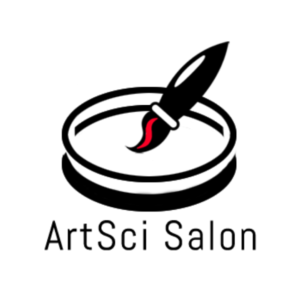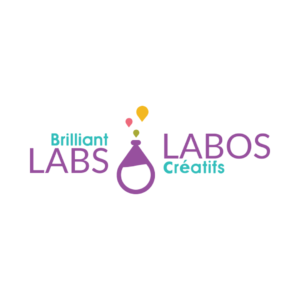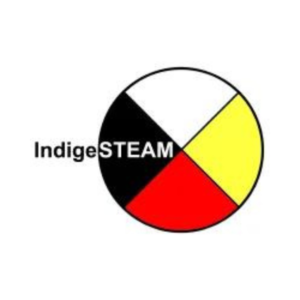STEM, STEAM and Everything Between
From STEM to STEAM
STEAM stands for Science, Technology, Engineering, Arts and Mathematics. Usually. Sometimes, the “A” stands for Art, The Arts, Arts and Humanities. It depends on who you ask. “STEAM” as a term was originally an educational philosophy that integrated the Arts into STEM classroom education with the intent of boosting students’ STEM participation. So, to understand STEAM we need to understand STEM and why it exists.
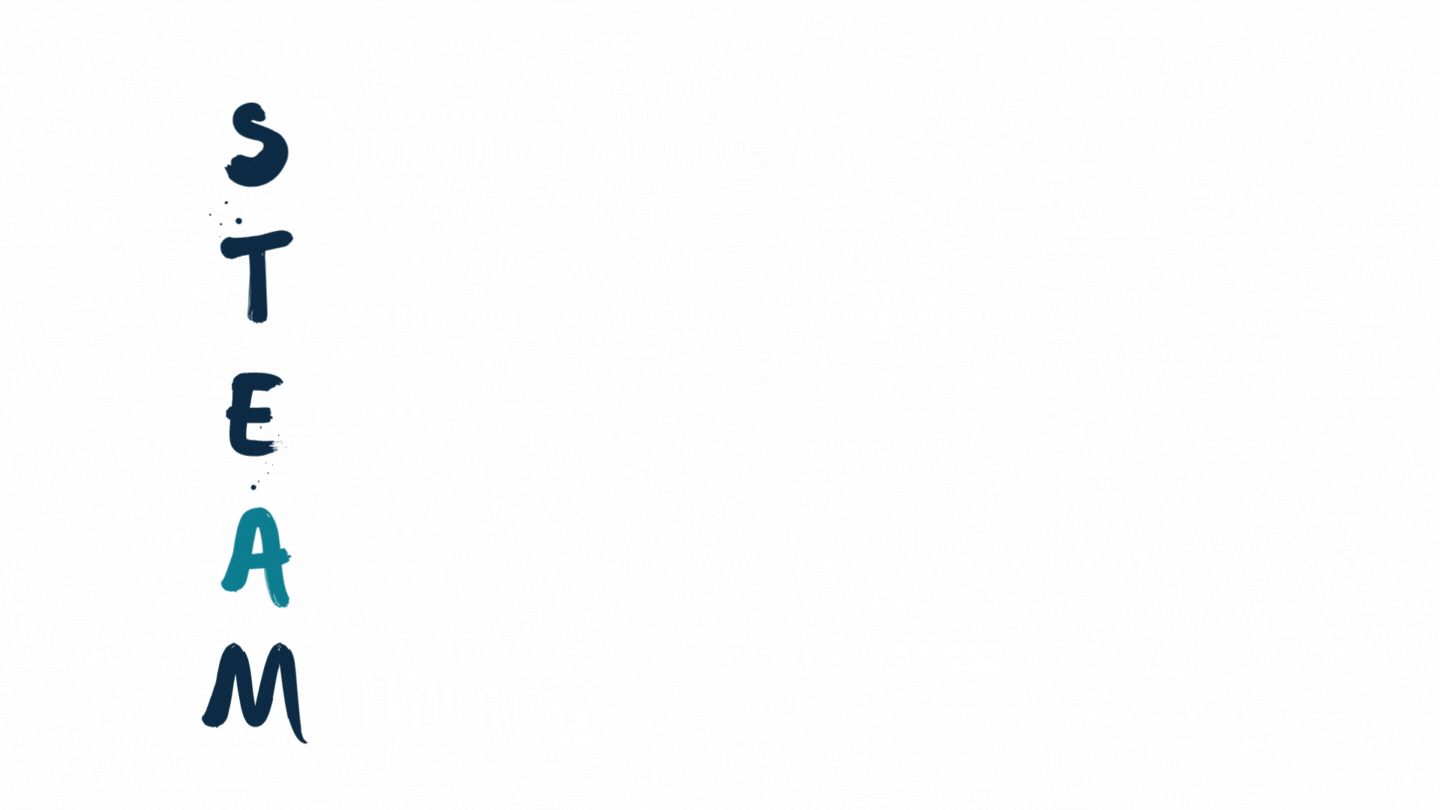
Where did STEM come from?
STEM stands for Science, Technology, Engineering and Mathematics. STEM started life as SMET by the US National Science Foundation in 1990 as a list of disciplines (Science, Mathematics, Engineering and Technology)1 Sanders (2009) STEM, STEM Education, STEMmania. The Technology Teacher, 68(4), 20-26 https://vtechworks.lib.vt.edu/handle/10919/51616 . Mercifully, the acronym was switched to STEM in 2000. The idea behind the acronym shifted too; STEM became an entity rather than merely a list. This entity and its isolation from the education system created a clear hierarchy in education. STEM was important for economic, national and military power.
That said, the way STEM was used in classroom settings varied. In some cases, the subjects were taught in a way to emphasize connections, in other cases no-so-much. iSTEM or integrated STEM showed up around 2007 with an emphasis on making sure the subjects (especially technology) were integrated. There are also ways that STEM connected with community knowledge, and everyday cognition and made a push for greater equity and representation.
Art and STEM, Before STEAM
Prior to the advent of photography, drawings and paintings were the only way to visually depict anything. Even today the illustrations of Ernst Haeckel, Beatrix Potter represent living things through a balance of accuracy and aesthetics. Going beyond a mere diagram, the illustrations were interpretive, placing the subject in-situ to best effect.
In this way artistic techniques such as watercolour, graphite and oil paints were a medium to accurately convey observations of the natural world.
Following the Launch of Spuntnik (1957) there was a lot of economic and political resources poured into science outreach. Artists took inspiration from scientific findings, technology and new materials to create new forms of art that both celebrated and critiqued science.
Throughout the 1960’s artists experimented with science tools, results and materials. Three major and long-running initiatives began to highlight and explore the collision of art, science and technology.
Leonardo Journal (1968) was founded by artist and astronautical pioneer Frank Malina in Paris. The journal was and still is a place for artists and musicians to share how they used science and technology in their work.
The Exploratorium opened its doors in the fall of 1968. As the museums of art, science and human perception, it’s boundary-crossing exhibitions, events and activities delight visitors of all ages.
Ars Electronica is an Austrian-based festival that started in 1979. It is a global hub for art and technology.
In 1996, the UK’s Wellcome Trust began its SciArt initiative. It invited projects that showcased collaborations between visual artists and scientists to explore biological and medical sciences.
SciArt (1996) was not the first term used to describe art and science collaborations.
ArtScience (1990) was coined first by Todd Siller. That same year, the Brazillian National Arts Foundation launches ArteCiencia (1990). ArtScience has been used a few times by the Leonardo Journal most notably in the 2011 Manifest “ArtScience: Integrative Collaboration to Create a Sustainable Future”.
BioArt (1997) was coined by Eduardo Kac to label art that was made using biological materials, tools, or techniques.
ArtSci was another term used to communicate the collaboration between art and science and most notably used by the ArtSci Salon starting in 2012.
Art + Science (2013) was part of the title of a book by Stephen Wilson (Art + Science Now) that offered a global map of art, science and technology projects.
Where is STEAM now?
Iterations of STEAM
While STEAM has a host of definitions, I found a way of looking at STEAM projects/initiatives/curricula that takes that diversity into account. Mejias et al. (2020) came up with a useful matrix for understanding the “rhetorics” of STEAM. They overlapped two axes. The first was “purpose”; was this version of STEAM to educational or non-educational purposes (pedagogical versus non-pedagogical). The second axis asks the question of the relationship between the disciplines. Were the disciplines all supporting and serving one another (mutually instrumental) or was one discipline used to support the others in one direction (one-sided instrumental).
I should note that the authors use STEAM as an umbrella term for any Art and STEM interaction. It’s interesting (and kind of fun) to think of different projects and try to fit them into the matrix.
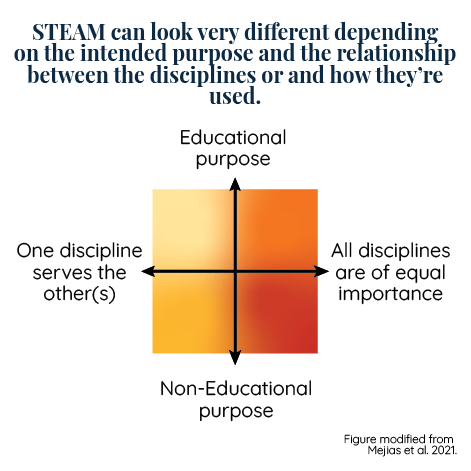
STEAM in Canada
The history of STEM and STEAM has a very strong bias to the USA. So, here are some Canadian projects and initiatives your should keep an eye on.


